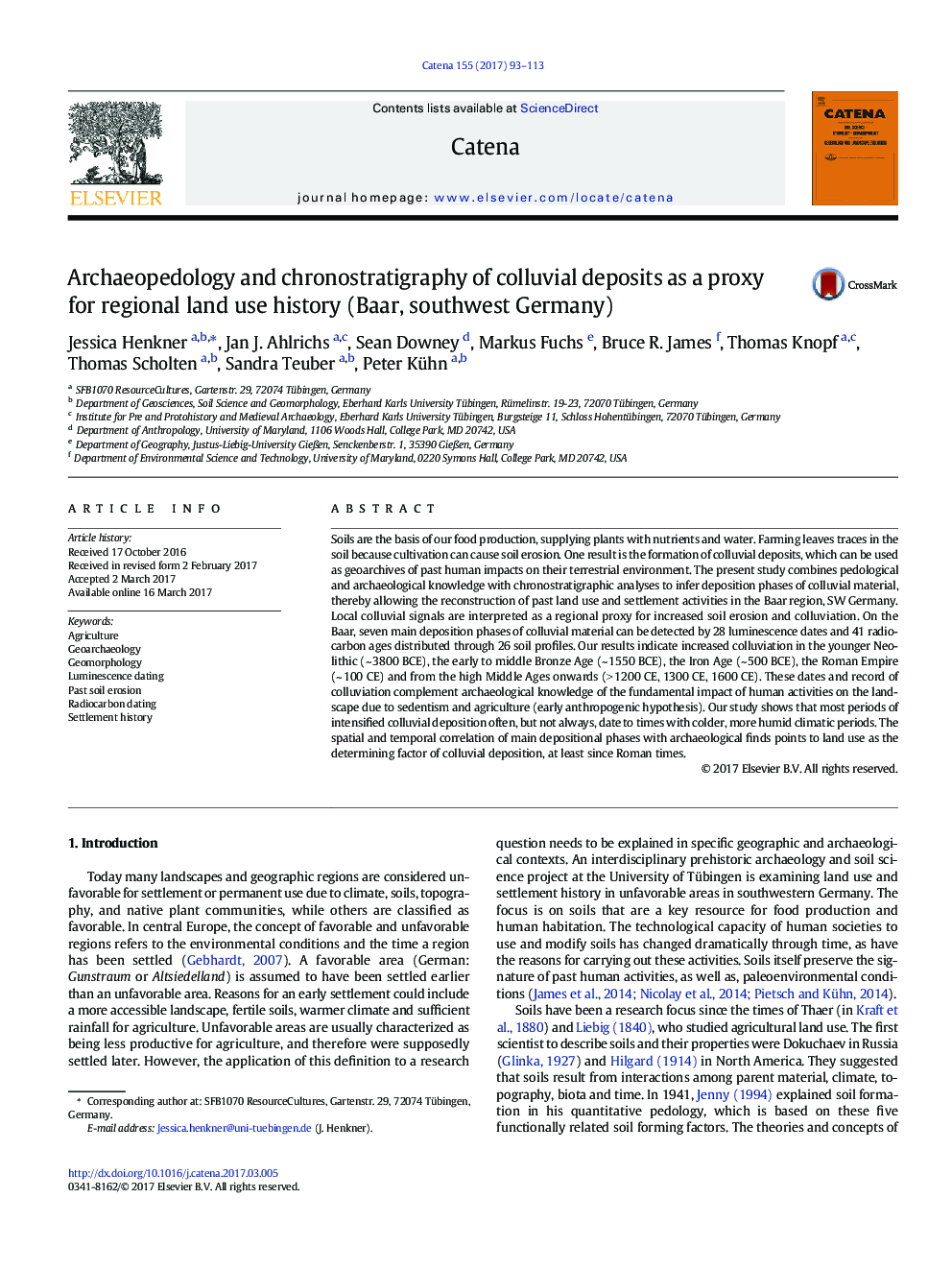| کد مقاله | کد نشریه | سال انتشار | مقاله انگلیسی | نسخه تمام متن |
|---|---|---|---|---|
| 5770129 | 1629199 | 2017 | 21 صفحه PDF | دانلود رایگان |
- Colluvial deposits are useful as a regional proxy for land use during the Holocene.
- Seven main phases of colluvial deposition can be reconstructed in SW Germany.
- Both climate and human presence control soil erosion and accumulation processes.
- Increased human influence on soils is evident since the beginning of the Neolithic.
- Humans are the controlling factor of colluvial accumulation since the Roman Empire.
Soils are the basis of our food production, supplying plants with nutrients and water. Farming leaves traces in the soil because cultivation can cause soil erosion. One result is the formation of colluvial deposits, which can be used as geoarchives of past human impacts on their terrestrial environment. The present study combines pedological and archaeological knowledge with chronostratigraphic analyses to infer deposition phases of colluvial material, thereby allowing the reconstruction of past land use and settlement activities in the Baar region, SW Germany. Local colluvial signals are interpreted as a regional proxy for increased soil erosion and colluviation. On the Baar, seven main deposition phases of colluvial material can be detected by 28 luminescence dates and 41 radiocarbon ages distributed through 26 soil profiles. Our results indicate increased colluviation in the younger Neolithic (~Â 3800Â BCE), the early to middle Bronze Age (~Â 1550Â BCE), the Iron Age (~Â 500Â BCE), the Roman Empire (~Â 100Â CE) and from the high Middle Ages onwards (>Â 1200Â CE, 1300Â CE, 1600Â CE). These dates and record of colluviation complement archaeological knowledge of the fundamental impact of human activities on the landscape due to sedentism and agriculture (early anthropogenic hypothesis). Our study shows that most periods of intensified colluvial deposition often, but not always, date to times with colder, more humid climatic periods. The spatial and temporal correlation of main depositional phases with archaeological finds points to land use as the determining factor of colluvial deposition, at least since Roman times.
183
Journal: CATENA - Volume 155, August 2017, Pages 93-113
